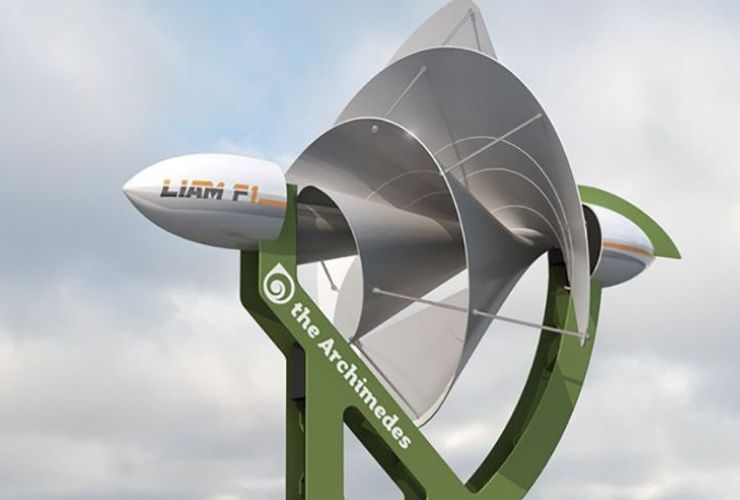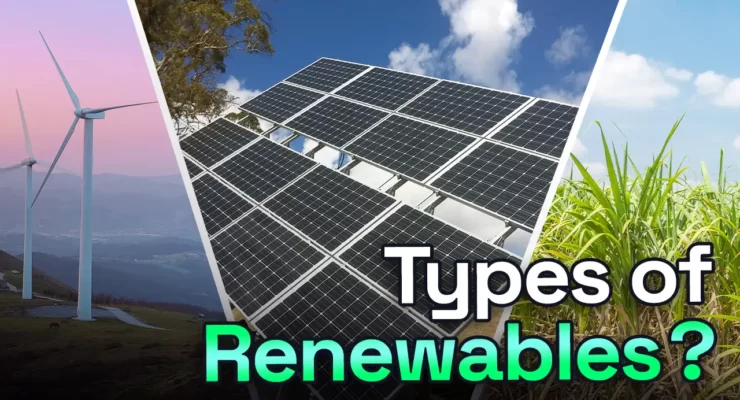Fast read
Renewable energy offers sustainable solutions to rising global energy demands. This article explores five key types:
- Solar Energy: Harnessing sunlight for electricity, solar power is gaining popularity worldwide, especially in sunny regions like Australia.
- Hydro Energy: Utilising flowing water's kinetic energy, hydropower provides stable electricity generation and energy storage.
- Wind Energy: Capturing air movement, wind power is rapidly expanding as turbines convert wind energy into electricity.
- Biomass Energy: Converting organic materials into heat, electricity, and biofuels, biomass offers eco-friendly energy alternatives.
- Geothermal Energy: Tapping Earth's heat for electricity and heating/cooling, geothermal energy provides efficient, low-emission solutions.
Investing in renewable energy is essential for a cleaner, brighter future.
Exploring the Different Types of Renewable Energy
In today’s fast-paced world, the demand for energy is constantly on the rise. This surge in energy needs has led to an urgent search for different types of renewable energy sources. Renewable energy comes from sources like sunlight, wind, water, biomass, and geothermal heat. It helps reduce our use of fossil fuels and lessen the harm to the environment from extracting and burning them.
This article looks at the five main types of renewable energy and how they could change the world’s energy sources. By harnessing the power of renewable resources, we can not only meet our energy needs sustainably but also pave the way for a cleaner and greener future.
Different types of renewable energy help by reducing pollution, creating jobs, and making energy more secure. It also improves air quality and reduces greenhouse gases. As we delve into each renewable energy type, we’ll uncover its unique characteristics, technological advancements, and its role in reshaping the way we generate and consume energy on a global scale.
Solar Energy:
Solar power, a renewable energy source that harnesses sunlight to generate electricity, is experiencing a surge in popularity globally. Solar panels, equipped with innovative technology, directly convert sunlight into usable electricity. This clean and sustainable energy solution holds immense promise for a brighter future.
Australia and other sunny regions can benefit greatly from using solar energy. The amount of solar power available can vary depending on the time of day and location. The abundance of sunlight makes solar power a particularly attractive option in such areas.
By leveraging solar energy, individuals and communities can make significant strides towards reducing pollution and cutting energy costs. Solar power offers a win-win solution, contributing to environmental conservation while also providing financial savings for users.
As technology gets better and solar power becomes easier to use, more people can start using solar energy. Embracing solar power not only promotes sustainability but also empowers individuals and communities to take control of their energy consumption and environmental impact.
Hydro Energy:
Hydropower, generated from the kinetic energy of flowing water, is one of the oldest and most reliable forms of renewable energy. By constructing dams or barriers, large reservoirs can be created to regulate water flow and drive turbines, producing electricity.
Hydropower is a reliable source of energy. It can save extra energy for times when it is needed most. This makes it useful for both homes and businesses. Its widespread application underscores its significance in the transition towards sustainable energy systems.
Wind Renewable Energy:
Wind power is getting more popular because it uses the wind to make electricity. Large turbines catch the wind and turn it into power that enters our electrical systems. But not every place is right for these small wind turbines.
Technology keeps getting better, though, and where we put these turbines keeps improving. That means wind power is becoming a better choice for clean energy. It helps reduce pollution and makes our planet healthier.
So, as we use more wind power, we’re moving towards a cleaner and greener future for everyone.

Biomass Renewable Energy:
Biomass energy is made by turning leftover crops and wood pellets into usable power. Unlike burning fossil fuels, biomass energy is better for the environment because it produces less pollution.
By using biomass energy, we can manage waste more effectively and help make the planet healthier by reducing harmful greenhouse gases. Also renewable, meaning we can keep using it without running out.
Another benefit of biomass energy is that it creates job opportunities, especially in rural areas where these materials are readily available. Overall, biomass energy is a sustainable and beneficial way to generate power that benefits both people and the environment.
Geothermal Renewable Energy:
Geothermal energy taps into the Earth’s heat reservoirs to produce electricity and provide heating and cooling solutions. Geothermal power plants use heat from underground to make electricity. They get steam or hot water from below the Earth’s surface to power turbines.
Additionally, geothermal energy systems offer efficient heating and cooling solutions for residential, commercial, and industrial applications. With proper utilisation, geothermal energy can significantly reduce reliance on fossil fuels and mitigate carbon emissions.
Pursuing renewable energy sources represents a pivotal step towards building a resilient future. Different types of renewable energy sources like solar, hydropower, biomass, and geothermal energy offer reliable and versatile alternatives to traditional energy sources.
By embracing different types of renewable energy technologies, we can mitigate climate change, enhance energy security, and foster economic growth while preserving the planet for future generations. We must continue to invest in research, innovation, and infrastructure to unlock the full potential of renewable energy and propel it towards a cleaner and brighter tomorrow.



